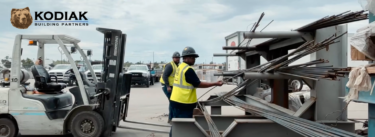I was blessed with the opportunity to learn lessons from my Japanese trainers during the startup phase at TMMK (Toyota Motor Manufacturing Kentucky) in 1987-88. I was in production and we had to determine many things ahead of time in regard to standards, 5S, work instruction, and visual controls in order to meet the needs of our customer which was the Assembly shop. Each group was assigned a trainer (or two, depending upon the size) whose job was to mentor us every step of the way. At the time I didn’t appreciate how priceless their presence really was. They could be very annoying and deep down you wished you could have hid from them. (They seemed to ask WHY all the time—how annoying!) Yet looking back almost 24 years later I didn’t realize how special those times were and how much I learned.
I’d like to share one particular lesson from that time, one that opened my eyes to how important the smallest actions are within your daily work processes, and how those changes affect the long-term company sustainability and capacity to learn.
Let’s call this the One Second Lesson.
I vividly remember the moment the light bulb went off for me, forever changing how I looked at waste. I was only 19 and have applied this wisdom ever since, a lifelong obsession with trying to see and eliminate muda, or waste. One day our trainer gathered us together and said, “everyone, I have challenge for you!” We were excited yet nervous about what he expected us to do. Their role as trainers was to get us to do what were didn’t think we were capable of. Similar to my role now as a sensei!
Our sensei asked us to all look for one second of waste in our process. I have to confess that when he said that I felt like a deflated balloon. Really, I asked myself, is that all? Sheesh, who really cares about one second? Our trainer sensed that none of us considered this one second target to be that important. And so he stopped to explain why this was so important. One of the ways that our trainers stoked our passion was to always explain the purpose of why we were doing something. Many companies explain what they want you to do and sometimes even how they want you to do it, but leave you out in the cold about the purpose—why it’s so important. (See a previous blog post about the WHAT, HOW and WHY!)
The trainer explained the importance of one second in terms of company savings. He said, “if everyone in the plant saved one second on their process we could make eight more cars a shift.” Once again I scoffed, saying “what” under my breath.
…if everyone in the plant saved one second on their process we could make eight more cars a shift.
Interestingly, the Japanese Trainers NEVER tried to purposely point out what THEY wanted us to see. It was always a test or lesson for them to teach us to see it. They did that by asking questions. So they definitely saw the waste in the processes we were doing but their job as a trainer was to teach us to see it (so we could eventually “lead” that way). And they started by having us recognize the power of correcting just one second of waste. He studied our work processes and helped us see that if were we all to look at the “value” of one second of time—and translate that to cost, we could realize huge savings individually, as a group, and as a company. So if not only our group, but the entire plant found a wasteful second then accumulatively we could make 8 more products (Camrys) in a shift. This translated to a productivity improvement, profit improvement and development of people. 8 more products can translate into thousands of dollars that we DIDN’T make because we “accepted” the waste as “ok”.
Understanding that NO waste was too small to combat changed my awareness and daily work forever. I became hyper-aware of my steps, my reaches, my ergonomic position, and rework. I joined my colleagues in looking for waste everywhere: through the andon, our suggestion system, our quality circle program, task force groups for each key performance indicator or just by identifying the abnormality as we recognized it. It was an expectation of our job, not a choice that is what they were wanting us to understand- that it was an essential part of our job to maintain stability, sustainability and long-term growth and success.
Looking for one second of waste prompted us all to understand the importance of the Line of Sight. The line of sight asks a series of questions that starts with:
- What is my role?
- What is my work responsibility? (my daily responsibility that links me to value added work)
- What is my job’s purpose? (My scope to the Hoshin: how do I know I’m doing value added work?)
- What are the goals that guide my jobs purpose? (Hoshin = strategy deployment)
- How does all this pertain to the company goals (True North)
So when the trainer was translating the 1 second lesson to us, he stated how it helped us in our daily work. He also translated it to the company level as well, giving us all a line of sight.
So let’s just say that each car was a profit of $1000 dollars (disclaimer** I am making up an easy number for Math) so that is $8000 that was “waltzing” out the door that we “rolled our eyes at.” No one should care about 1 sec right? Isn’t that too picky? Give me a break right? Well after that moment, I started saying “wow”, 1 shift, how much is that in a week, month, year? –That adds up! That 1 second could be my job security one day. Really just 1 second!! So from that moment I was looking for seconds everywhere.
So how do you translate this to your world? You might not be looking for one second like we were. But it could be:
- 1 hour of time
- 1 day of lead time
- 1 penny
- 1 dollar
- 1 week
Where is your waste? Are you seeing it? Can you translate it if you do see it? This type of thinking is a requirement in my opinion not an option. How much has to hemorrhage out your door before you care? “Go thinking” as my trainer would say!
Building a Lean Operating and Management System
Gain the in-depth understanding of lean principles, thinking, and practices.






